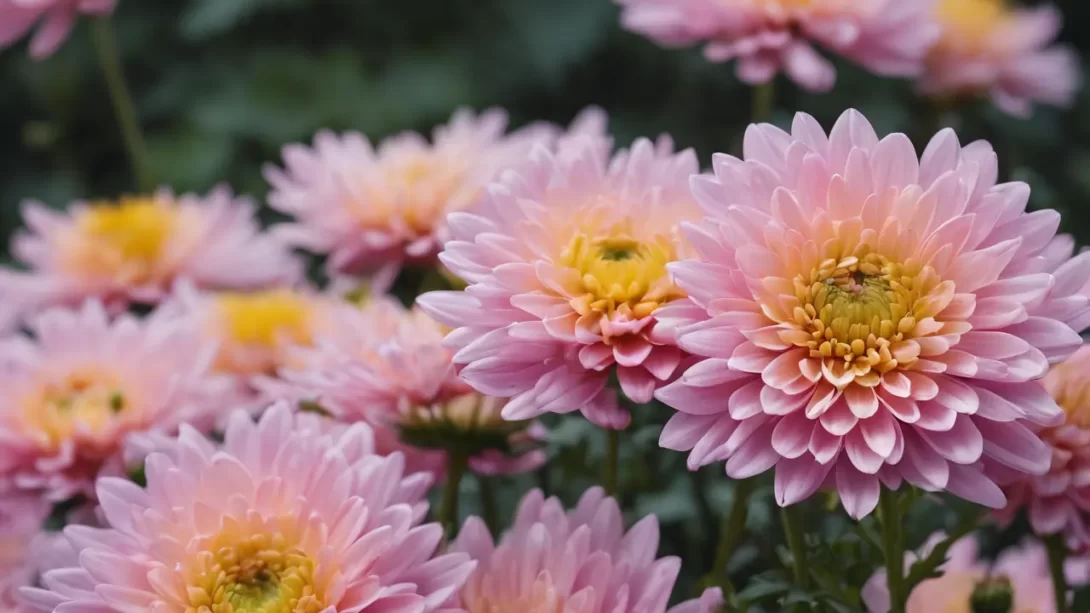Chrysanthemums, commonly known as mums, are a favorite among gardeners for their vibrant colors and robust blooms. Renowned for their autumnal charm, mums can, however, pose a challenge in terms of maintenance and care. This article aims to demystify the process of keeping mums thriving, offering practical advice and tips to help gardeners of all levels enjoy the beauty of these flowers.
Mums
Mum Varieties: Mums come in a plethora of varieties, each with unique colors, shapes, and sizes. Garden mums are hardy and ideal for outdoor gardens, while florist mums are typically grown indoors.
Choosing the Right Variety: Selecting the right variety for your climate and garden conditions is crucial. Hardy varieties are best for colder climates, as they can survive winter temperatures.
Seasonal Behavior: Mums are photoperiodic, meaning they bloom in response to shorter daylight hours in late summer and fall. Understanding this can guide gardeners in providing the right care at the right time.
Planting Mums
Best Time to Plant: The ideal time to plant mums is in the spring after the danger of frost has passed. This gives the plants ample time to establish their root systems before the cold season.
Soil Preparation: Mums thrive in well-draining soil rich in organic matter. Before planting, amend your soil with compost to ensure optimal growth conditions.
Planting Tips: When planting mums, ensure adequate space between plants for air circulation. This helps prevent disease. The planting depth should be the same as the root ball, and mums should be watered immediately after planting.
Watering and Feeding
Watering Needs: Mums require consistent moisture but are prone to root rot if overwatered. It’s important to water them deeply, allowing the soil to dry slightly between waterings.
Fertilization: A balanced, slow-release fertilizer applied in the spring can promote healthy growth. Avoid fertilizing late in the season, as this can hinder the preparation for dormancy.
Avoiding Over-Watering: Ensuring good drainage and monitoring soil moisture can help prevent over-watering. Mums in containers may require more frequent watering than those in the ground.
Sunlight and Temperature Requirements
Sunlight and temperature play crucial roles in the health and blooming of mums. Understanding and providing the right conditions can significantly enhance their growth and longevity.
Ideal Sunlight Conditions: Mums require a minimum of six hours of direct sunlight daily. Adequate sunlight is essential for robust growth and abundant blooming. Place mums in a location where they can receive ample morning light and some afternoon shade, especially in hotter climates.
Temperature Needs: While mums are generally hardy, extreme temperatures can be detrimental. They prefer a moderate temperature range. During hot spells, additional watering may be necessary to keep the soil moist.
Mulching: Mulching around mums helps in maintaining soil moisture and regulating soil temperature. A layer of organic mulch, such as straw or bark, can protect the roots from temperature extremes and retain moisture.
Pruning and Deadheading
Pruning and deadheading are vital practices for maintaining healthy and aesthetically pleasing mum plants. These techniques encourage fuller plants with more blooms.
Pruning Techniques: Pruning mums in the early summer can help them develop a bushier habit. Pinch back the growing tips of each stem by about one inch to encourage branching.
Deadheading Spent Flowers: Regularly removing spent flowers, or deadheading, encourages mums to produce more blooms. This practice also keeps the plants looking tidy and diverts energy to flower production rather than seed formation.
Seasonal Pruning: After the blooming season, resist the urge to prune back the foliage. The leaves help nourish the roots for the next season. Pruning should be done in the spring when new growth begins to show.
Winter Care and Overwintering
Preparing mums for winter is key to ensuring their survival and revival in the spring, especially in colder climates.
Preparing for Winter: Before the first frost, water your mums thoroughly. This hydration helps them withstand the cold. Adding a layer of mulch after the ground has frozen can provide additional insulation.
Overwintering Techniques: In regions with harsh winters, overwintering mums in the ground can be challenging. Consider mulching heavily or covering the plants with a protective layer, such as burlap. For container-grown mums, move them to a sheltered location, like a garage or shed, where they are protected from extreme cold.
Reviving in Spring: As the weather warms, remove any protective coverings and extra mulch. Trim dead stems and watch for new growth as a sign to begin regular spring care.
Common Pests and Diseases
Even with the best care, mums can be susceptible to certain pests and diseases. Early identification and proper management are key to keeping your plants healthy.
Pest Identification: Common pests that affect mums include aphids, spider mites, and thrips. These small insects can be identified by their presence on the undersides of leaves or by the damage they cause, such as distorted leaves or a sticky residue.
Disease Management: Diseases like powdery mildew, rust, and leaf spot are prevalent in mums. Symptoms include discolored leaves, white powdery substance, or rust-colored spots. Good air circulation, proper watering, and cleanliness can help prevent these diseases.
Treatment Options: For pests, insecticidal soaps or neem oil can be effective treatments. Fungicides may be required for fungal diseases. Always follow the product’s instructions for safe and effective use.
Preventive Measures: Regular monitoring of your plants, maintaining cleanliness in the garden, and avoiding overhead watering can help prevent the onset of pests and diseases.
Conclusion
Successfully growing and maintaining mums in your garden requires attention to their specific needs, including proper planting, watering, sunlight, and temperature conditions. Pruning, deadheading, and preparing them for winter are also vital for their survival and flourishing.
The joy and beauty that mums bring to a garden are well worth the effort. Each gardening experience is an opportunity to learn and grow along with your plants. With these tips and techniques, you can enjoy the vibrant display of mums year after year, adding color and life to your garden each fall.



